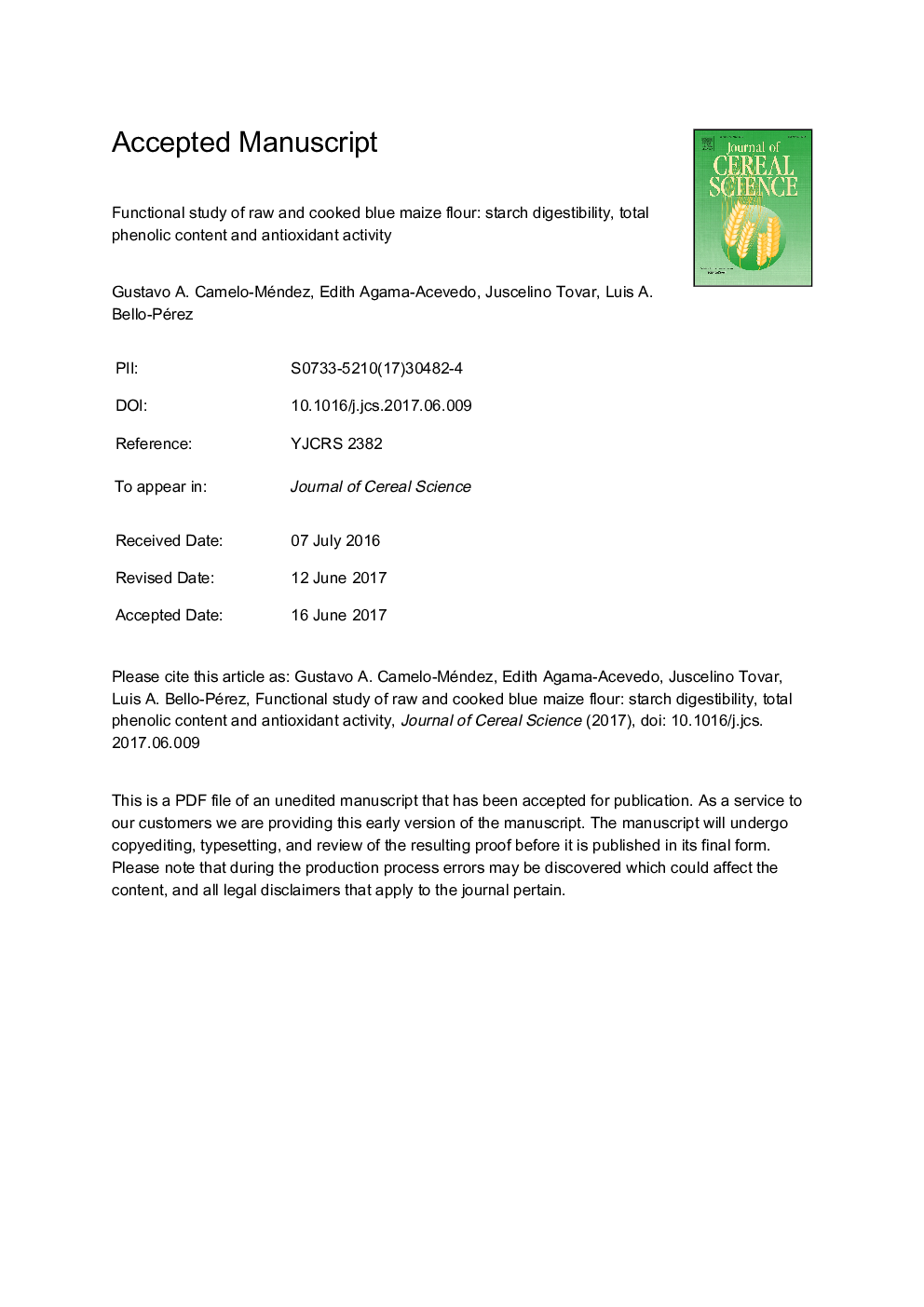| Article ID | Journal | Published Year | Pages | File Type |
|---|---|---|---|---|
| 5762326 | Journal of Cereal Science | 2017 | 30 Pages |
Abstract
The purpose of this study was to determine the chemical composition and antioxidant capacity of blue maize (BM) (Zea mays L.) flour and to investigate the effects of polyphenol-containing extracts and BM wholegrain flour on starch digestion under uncooked and cooked conditions; commercial white maize flour was used as control. Total phenolic content in BM flour (BMF) (164 ± 14 mg gallic acid/g of dry matter) was higher than white maize (127 ± 7 mg gallic acid/g of dry matter), and the presence of anthocyanins (2.0 ± 0.5 mg cyanidin 3-glucoside/100 g) was detected. Also, an important scavenging activity against ABTS (2,2'-azino-di-(3-ethylbenzothiazoline)-6-sulfonic acid) and DPPH (2,2-diphenyl-1-picrylhydrazyl) radicals and ferric reducing power (FRAP) was determined. Extracts of BMF reduced amylase activity (>90% of inhibition). BMF showed higher slowly digestible and resistant starch contents, thus exhibiting lower predicted glycemic index than white maize. Total anthocyanins (r = â0.89 and r = â0.79, p<0.05), antioxidant capacity (r = â0.86 and r = â0.96, p<0.05), total starch (r = 0.99 and 0.92, p<0.05) and resistant starch content (r = â0.99 and r = â0.92, p<0.05) were correlated with pGI for uncooked and cooked flours, respectively. These results indicate the potential use of BMF and its phenolic-rich extract as functional ingredients to develop antioxidant and indigestible carbohydrate-rich foods with potential health benefits.
Related Topics
Life Sciences
Agricultural and Biological Sciences
Agronomy and Crop Science
Authors
Gustavo A. Camelo-Méndez, Edith Agama-Acevedo, Juscelino Tovar, Luis A. Bello-Pérez,
